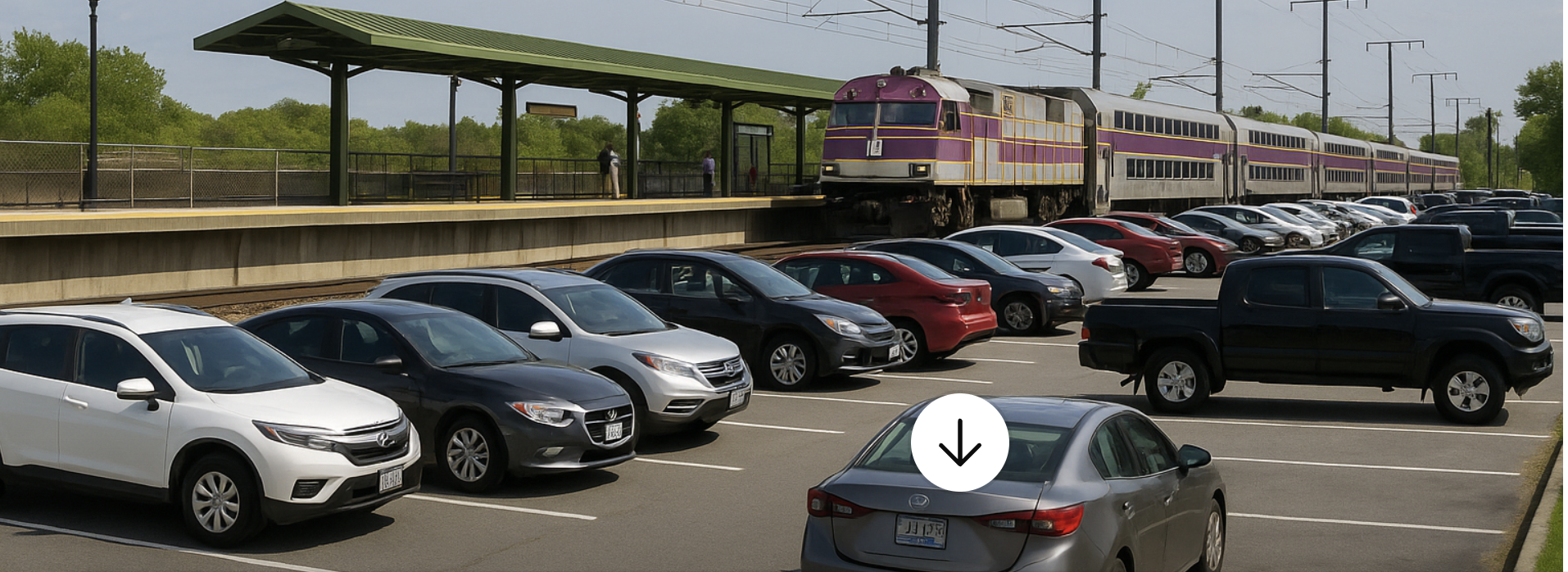Beyond Job Security: Employability in the AI Era
For more than 37 years, I have been in leadership, Board, investor, advisory, and advocacy


I’ve promised to integrate insights from multiple disciplines—seeing what siloed experts often miss. My first lesson in this came not from a law book, but from a project to increase parking spaces at train stations.
In 1985, as Assistant General Counsel at Pitney Bowes, my boss, Ed Harris, told me my legal work was excellent—but to advance, I needed a strong record of community service. I was reverse commuting daily on Metro-North’s New Haven Line, where reliability, station conditions, and scheduling were poor. Improving this vital service seemed like the right place to start.
The local business council’s transportation team, led by McKinsey partner Dolf DiBiasio, handed me a problem no one wanted: suburban rail station parking. Waiting lists ran 5–10 years at prime stations; daily parking was scarce even at multi-modal hubs like Stamford and Bridgeport.
With a small coalition, I learned to advocate effectively, secured $7.5 million in state funds for new parking facilities, and discovered something bigger—parking was a linchpin for mobility, economic vitality, environmental quality, and public health.
That project introduced me to state leaders and led to my work with the Connecticut DOT and Metro-North. Our volunteer task force took a commuter’s-eye view, finding that the rail system’s weakest links determined its success:
Over many decades, I saw parking’s unintended consequences:
There were personal reminders: in 2015, my wife and I narrowly escaped falling concrete in the Stamford garage. It had been poorly built and maintained to prevent water intrusion.
In 2010, our son’s car was stolen off the street during his first night in Los Angeles. It still had Connecticut plates. We reported the vehicle as stolen, waited three weeks, received a check from the insurance company, and transferred title to the insurance company.
Six weeks later, we received a notice in the mail from the Los Angeles Parking Violations Bureau that the stolen vehicle had three unpaid parking tickets in downtown Los Angeles. I followed the Bureau’s instructions to document that whoever parked illegally did so after it was stolen.
A month later, I received an even more threatening notice with an addition of three more unpaid parking violations. My wife called the Police Department and was told that they had no jurisdiction over the Parking Violations Bureau, which Los Angeles had outsourced to Xerox Corporation. We wrote the Bureau again and resent the same material. A month later, I received a certified letter threatening me with jail time and extradition if we did not immediately pay for what were now nine unpaid parking violations.
I contacted John Mack, the former CEO of the Los Angeles Urban League, whom I got to know when I was the League's National Board Chair. John had been appointed to head the Bureau of Police Commissioners, which had been created after the Rodney King incident in 1992 to monitor police practices. Although the Police Department had nothing to do with this, John got the violations dropped.
Absent my relationship with John and my legal knowhow, I might have paid a fine for something that was not our fault. The outsourced Parking Violations Bureau had a single-minded goal of collecting as much revenue as possible, even if it had to bend or break the law. If I were a low-income Black resident, I might have been intimidated into paying the fines and, perhaps, going to jail if I did not have the funds to pay the fines.
This series of events gave me better visibility into how lower-income and minority populations can get harassed by governments. When we analyze the background on race riots, we often see the triggering event being something like this—government overreach.
That 1985 parking project became a door into understanding infrastructure, environmental design, urban economics, race relations, and human behavior.
It taught me that transportation policy isn’t just about moving people—it’s about how every small design choice shapes safety, cost, livability, equity, fairness, and wellbeing.
But it taught me two other life and business lessons:
This process of trying to understand the interrelatedness of many seemingly unrelated disciplines became the way I approached virtually every problem I confronted from that point forward.